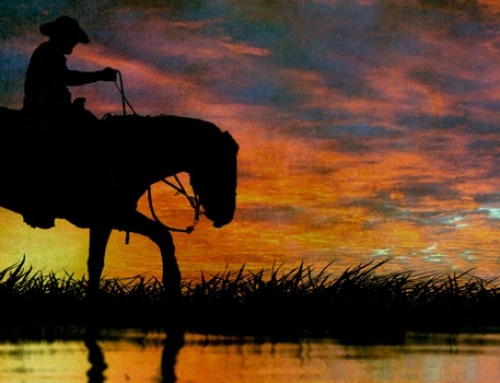There are a great many things that we have gained with the advent of technology and the widespread adoption of electricity. In the same expanse of time, we have had a great many advances, in almost all areas of life. Medically, scientifically, socially all have seen positive changes. For these, all should be not only grateful for them but move towards attaining the true knowledge of them all.
However, with all these breakthroughs, we have lost the essentials that, if all these modern advancements go away (and they could easily be swept away by EM Pulses, Wear and Tear, and the always threat of war) how do we keep the community slipping back to the early 1800s? Every part of America had its pioneers. Whatever their surroundings, the pioneers had to depend on themselves and on the land. Self-reliance was a frontier requirement. This has been lost in a great measure with today’s generations. The following are the areas of life that we have taken a step back on, instead of forward as general knowledge for the people as a whole.
Candlemaking
Making your own candles is easy and inexpensive. When electricity becomes hard to come by, having light when the sun goes down, candles can become a lifesaver.
Soap Making
Those before the 20th Century used to make soap themselves using the incredible amounts of wood ashes, a natural result of their living/farming activities, with also produced a plentiful supply of animal fat from the butchering of the animals.
Soap with some work can be made for free. Soap making was performed as a perennial or semiannual event on the homesteads of the early settlers. As the butchering of animals took place in the fall, soap was made at that time on many homesteads and farms to utilize the large supply of tallow and lard that resulted.
On the homes or farms where butchering was not done, soap was generally made in the spring using the ashes from the winter fires and the waste cooking grease, that had accumulated throughout the year. Soap making takes three basic steps.
- Making of wood ash lye
- Rendering or cleaning the fats.
- Mixing the fats and lye solution together and boiling the mixture to make the soap.
Food Preservation
Preserving food played a crucial part in a pioneer’s life. Not having refrigeration available was a driver of using other methods. The most used process to preserve the meat was smoking. The process of smoking is still used by a few die-hards, but most folks take a shorter route to preservation — canning, freezing, or diluted methods using “smoked” chemicals applied directly to the meat.
Here’s a smoking recipe from a man in 1976 who was in his 80s when he shared his recipe.
- Put your hams on a table or flat surface where mice or nothing can get on them. Rub Morton Salt Sugar Cure liberally over the cut surface of the hams.
- There is a place in the hams where you can put your finger in, so be sure that you fill that cavity with the sugar cure. Let your hams “cure” on the flat surface for a month or month and a half.
- For your smoke, use hickory, sassafras, or corn cobs. Smoke about four days. Some people smoke them for up to two weeks.
- You can tell how brown the hams are getting.
- The fire is for smoke only, a very small fire. You might use an old iron pot placed inside another heavy metal surface so it doesn’t burn the floor.
- All you want is a trail of smoke coming up toward the hams which will be hung by placing a heavy wire through the shank and securing the hams to a rafter or ceiling of your smokehouse.
- After you have finished smoking the hams, run them liberally with black pepper. Use plenty. Then wrap the hams in an old sheet or something and put each ham in something like a muslin bag or cotton feed sack.
Canning was also a very familiar preservation method. If you are familiar with canning fruits and vegetables then you’ll know how to can meat too. All you have to do is make sure that you take the meat’s temperature high enough to kill all bacteria before sealing the jars.
Grinding Wheat and Other Grains
Whole grains store and keep longer than ground flours. A hand mill can be used but the small electric motor versions are nice to have. Grinding grains makes it possible to create breads and make grain easier to digest for people and animals alike. Backdoor Survival has done a few posts on grain mills that are worth reading so you can make a good choice when buying a mill.
Fire Staring and Fire Building
Firewood gathering can be a lot of work, especially if you live in a place where it gets particularly cold. Different woods give you more BTUs of heat. A fire made with locust or hickory is going to burn hotter and longer than a fire made with tulip poplar. Using windfall wood is possible but it must be somewhat dry to do much good.
Cooking Over Open Fire
Cooking over an open fire differs substantially from kitchen-based cooking. Wanderers and travelers in the past had developed a significant body of techniques and specialized equipment for preparing food in outdoor environments. Such techniques have traditionally been associated with the Plains Indians and pioneers of North America, and have been carried down and refined in modern times for use during recreational outdoor pursuits.
Closely associated with the American Old West and cow drives, the Dutch oven method is a heavy cast iron pot, traditionally made with three short legs and a concave cover for holding hot coals on top. Dutch ovens were traditionally specially designed for camping, and such pots (often with legs and a handle, both for suspending the pot over a fire) are still widely available, though sometimes at a premium over flat-bottomed stove-top models.
The oven is placed in a bed of hot coals, often from a keyhole fire with additional coals placed on top of the lid, which in camp ovens usually has a raised rim to keep the coals from falling off. Dutch ovens are convenient for cooking dishes that take a long time such as stews, joints of meat and baked goods. They are not the only option for baking on a campout as devices for baking on portable stoves exist and clay ovens can be constructed at longer encampments.
A pot hanging over the fire, although picturesque, may spill, and the rigging may be difficult to construct from found wood. Generally this is done with metal rigging, much of it identical to that historically used in home fireplaces before the invention of stoves.
Two vertical iron bars with an iron cross-piece allow pots to be hung at various heights or over different temperatures of fire. Griddles, grills, and skewers can also be hung over the fire. When working with wood, one may use two tripods, lashed with tripod lashings, but the rope will be liable to melt or burn. Dovetail joints are more secure but difficult to carve.
Baking
In the past, baking of bread has a long history in many cultures. Now, most of us enjoy some baked goods at least occasionally. Baking your own bread, for example, can save you lot of money and allow you to choose your ingredients more conscientiously than otherwise. While the first loaf or two may not be ideal, making bread is not as hard as you might think.
Raising Livestock
The cattle barons went west to raise cattle. The open plains of the midwest were ideal for grazing huge herds, and the completion of the transcontinental railroad in 1869 made it possible to ship the cattle to market in large and profitable numbers. Cattle ranching was a tough business that gave the West its cowboys. Cowboys tended the herds while they were grazing, branded them when they were of age, fought off cattle thieves, and managed the long drives of thousands of cattle over hundreds of miles of open prairie to the railroads. They followed well-known trails, like the Chisholm Trail, that have become a part of the landscape of U.S. folklore.
Raising livestock can be very enjoyable and it is something that a lot of kids really like to do. Rabbits, cattle, goats, sheep, chickens, geese, pigs, and more can help keep your land cleared and provide a variety of food, fiber, leather, and more.
Butchering
Raising an animal is one thing, but butchering it is quite another. Few hunters even know how to properly butcher and dress an animal, as most nowadays take them to a butcher for cutting up and packaging. Yet, an animal which is not properly cleaned and butchered can cause disease. You can also waste a lot of good meat by not doing it correctly. The pioneers knew how to butcher an animal the right way and never wasted anything. Every part of the animal had a use.
While butchering may not be the job you want to do, it is extremely valuable to know how to butcher out your livestock or game. While it is slow going at first, you get better at it. Safe butchering at home can save you a lot of money in processing fees and even lead to a better quality selection of meats.
Tanning
This is the first step in tanning hides and making leather the old fashioned way. Sometimes called brain tan, smoke tan, Indian tan or home tan. Leather was once the absolute go-to for strong material for belts, saddles, clothing, and more. Even today a lot of things are still made of leather. Knowing how to cut, sew, tool, and even make leather from animal skins is an amazing skill to have. Leatherwork can help supplement your income and is fantastically artistic. Leather lasts and is very strong plus it is a byproduct of meat production or hunting!
First Aid/Emergency Medical Care
During a medical emergency, seconds can make all the difference. Reacting quickly and confidently is easier to do if you learn and practice skills before something may happen. A good general medical book is something you should consider for your library. If you have the chance and are just starting out in the world of prepping then you should consider taking a first aid or CPR class when one is offered in your area.
Sewing
Sewing can seem like such a vintage thing, but it truly is not! Being able to patch up holes in clothing and tarps among many other things can useful in living in a new normal. It’s not a skill that should be left to the grandmothers of the world it’s one that should be passed on down the generations. Repairing and mending items can be done if you know a few stitches. On a larger scale, you can make your own clothing, linens, quilts, and more. You can save a lot of money and have better quality blankets because you make the ones you want to use.
We’ve just mentioned some of the obvious uses for sewing so far, being clothing and tarps, but what if you need to sew up a wound? This may seem simple, but if you’ve never sewn before you having nothing to base this assumption on.
Weaving and Spinning
Basic weaving can be done on a very small handloom. If you want to you can sew sections together to make bigger blankets and clothing. Big looms are nice but they are a big investment and take up a lot of a room. Spinning and processing fiber is an extremely valuable skill too. There is a lot of fiber animals out there but it requires a lot of work to get it to the point of being usable for clothing.
In a post-crisis world, not only will it be impossible to buy clothes, you may also find it just as hard to buy material, patterns, and tools for making your own clothes and shoes. Someone can learn how to knit, crochet, weave, and hand sew to make far better quality long-lasting clothes than what you see in the stores. Our ancestors readily turned cotton, wool, hemp, and other plant-based goods into textiles by using spinning wheels and looms. By the same token, stretching and tanning animal hides (including brain tanning) also offer a source of fabric from just about any animal you take for food.
Well Drilling
Having your own well on your property is a good idea even if you just want fresh, clean water that isn’t full of fluoride and chlorine like city water is. If SHTF, you’ll have one major problem already solved. Even if it doesn’t come to a survival scenario, having your own water supply means that you’re basically off the grid. You’re not dependent upon third parties and that’s awesome in my book. All these things considered, learning how to dig a well is a good lesson that every prepper should master.
Milking
Milking is actually a lot harder than it looks. There is a method to hand milking that takes practice to master and it requires some intense work of your hands. If you don’t do it right then an animal can try to hold their milk and make it more difficult for you to milk them. This skill is important if you want to have more than well water to drink, and even that slice of cheese that can complement a meal or snack.
Gardening
A simple raised bed or container garden is all you need to get started on the wonder path towards producing your own fresh fruits and vegetables. We have found that the several ways to generate your garden, Aquaponic, Hydroponic, and Permaculture methods are the best ways to go about it. The mass production type of farming can lessen the nutritional content of the seeds and growing methods (GMO Seeds, pesticides, etc.).
Herbal Gardening
During good times and bad, there is a lot of value to be had when it comes to herb gardening. The cost of a lot of herbs and spices is high but they are quite easy to grow in containers or small beds and utilize in your everyday cooking.
Herbal Medicine
Growing those plants that have medicinal properties are still essential. Medicine that you can forage and grow yourself is a win-win. While some may not believe in the power of herbal medicine, it is important to remember that a lot of the medications in the world are extracted from plants.
Knowing Herbal Remedies
For medicines, the pioneers had to provide for themselves. It was usually the women on the homestead that learned the use of herbs for healing. They used boneset for fever, pennyroyal to purify the blood, horehound for coughs, and ginseng for tonic. Syrups and salves were made from cherry root, horseradish, and witch hazel. Wild mustard, poplar root, and red sumac root went into teas, poultices, and powders. The standard cure for a chest cold was to rub the chest with goose grease and apply a mustard plaster.
It is important to separate what truly works for health and well-being and what may be pure superstition. The Herbal Alchemy of tinctures tried and true is key.
Foraging
From all the skills mentioned here, this is probably the most well known. However, we’ve seen that many people either focus on the ability to hunt, or the ability to forage. In order to give you the best chances of survival, knowledge of both skills is extremely necessary.
It can be quite fun to take walks and learn about what plants are available in your area. Mushrooms can be tricky so it is good to learn a lot before foraging. If you have a local mushroom club then it is worthwhile to go out on a few trips with others to hone your skills. You might be surprised just how much out there is edible and nutritious if you know what to look for and how to prepare it.
Saving Seeds
Saving seeds is maybe a known skill but it is vitally important to the survival of your garden. By saving seeds you ensure the continuity of your food supply over the years. Start by saving your seeds and planting them in spring to practice this skill. You can save extra seeds and sell or trade them to others so they can grow their own food too. Remember those old heirlooms that are not hybrids are best for saving because they give you predictable results and genetics year after year. Hybrids produce seeds that while they might be viable, may give you a totally different plant when you use the seed. Storage conditions are critical to maintaining viability and germination rates.
Beekeeping
Honey is one of nature’s finest sweeteners. Years ago white table sugar was a luxury that wasn’t used as often. Honey was cheaper and easier to come by because it could be produced at home instead of having to be processed and shipped from a distant area and then bought in a store.
Beekeeping is an activity that has a lot of enthusiastic people in it that love teaching others. Do a search online for a beekeeping organization or club in your area and you will have a wealth of knowledge to learn from and make some great new friends.
Orchard Management
Fruit adds a lot of nutrients and antioxidants to your diet. A very small orchard can yield a lot of fruit. There are a lot of different trees out there that can fit into very small spaces. Columnar apple trees can be grown in containers even if you rent or have a small patio. They also make an excellent hedge or border. Learning how to manage a larger orchard may involve grazing animals beneath the trees and using natural practices to reduce disease and insect damage.
Basic Carpentry and Shelter Building
The pioneers had to be very good carpenters. On every new frontier the pioneers made homes for themselves, using what the surrounding countryside provided. In the great forests of the Ohio and Mississippi valleys the land provided timber. Here the pioneers’ essential tool was the ax. The ax would clear the forest for the plow. But its first task was to shape a pioneer shelter.
While it takes some special tools to do some projects there are a lot of basic things you can make with a minimal tool cost.
What you can do with concrete blocks around the homestead is amazing. You can also build a house or solid outbuilding with block. These types of structures are great for those that are on a budget because you can lay a few blocks at a time as you can afford it. That means building in $50-$100 increments rather than spending thousands all at once. Repairing existing masonry is also a very valuable skill to have.
Never put off addressing a problem unless you absolutely have to. A small leak, for example, can cost a few hundred or less to fix right away but waiting for two months could lead to thousands of dollars and/or a lot of work for you to do.
Trading
The concept of private barter and alternative economies has been so far removed from our daily existence here in America that the very idea of participating in commerce without the use of dollars seems almost outlandish to many people.
One thing is certain, though: in the aftermath of a widespread disaster or the collapse of civil society as we know it, you’ll want to have useful skills and items that you can barter or trade with. Once society collapses, bartering will become a business. Individuals will have items they can barter with, but in most cases, a person would not be able to afford to part with the items they do have. You must have a trade to fall back on that is an essential needs in such circumstances.
Most people won’t, and being a telemarketer is not going to be something that people will need. Anyone not prepared will have nothing to barter with, so looters will be active as well as desperate. Real trading will be based On ‘long term’ items. Seeds, not food. Arrows, not ammo. Tools, not filters. See, once the ‘short duration expendables’ are consumed, you won’t be re-supplying, you’ll be making your own or doing without.
Knowledge and durable supplies (axes, hammers, saw blades, etc.) will be the real money. These commodities will be very sought after. So, forget stocking for that 2-week event, it’s not that difficult. The hard part is stocking for the total paradigm shift, that few remember how to do much of.
You won’t be making your own saw blades anytime soon. Now, ask yourself, what else will you NOT be making, that you need to learn how to make, or replace with older technology before you need it (or need to trade for it)?
Navigation
Being able to read a compass and a map is maybe one of the most important skills that will make the difference between life and death. Imagine the pioneers that had to make huge journeys to the old west from Independence Missouri to Oregon City.
They were able to orientate by the stars and by the sun. Nowadays is easier to use a GPS but if SHTF and the GPS won’t work anymore the old ways will come handy. The latest generation haven’t the foggiest idea on how to use a physical paper map at all.
Tracking
Our ancestors used many skills to survive. They used their tracking skills to find and hunt the animals used for food, clothing, and tools. They had to make the bows and arrows, traps and snares, clubs and tomahawks used in hunting. While hunting, they had to know what plants, or parts of plants, were edible and how to prepare them. They also knew what plants were used for medicinal purposes, and how to prepare the medicines. They knew how to find their way through forests, mountains, and unfamiliar terrain without the aid of compasses and maps.
Our ancestors had many skills essential to survival. We should never forget these skills or how to use them.
Tracking is identifying an animal by the footprints the animal left on the ground, by its scat, and by the environment surrounding those footprints. By identifying the animal in question, a person can know whether to pursue the animal or evade it. Such things as gait, along with the distance between prints, can tell you if the animal is running or walking. Becoming familiar with the footprints of an animal is just the beginning of understanding tracking. The size and depth of the print can help tell you the size of the animal.
Trapping
Having the skill of trapping small game for food will be a great advantage. Knowing how to set multiple types of traps for different animals will ensure your survival and the survival of your loved ones.
Hunting
Protein can become scarce in a survival situation. Hunting is a great way to add some meat to your survival food. Of course, the amount of game where you are is going to vary and during really tough times, the game can get scarce but you should know some hunting skills if possible. Those that plan on bugging out should even more strongly consider how much they know about hunting.
Hunting requires spending a lot of energy, and there’s a reason that settled humans moved from hunting to cultivation in the form of growing food and rearing livestock. The ability to grow fruits and vegetables not only saves you from having to hunt as much, but it also provides nutrients for your diet that you might not otherwise obtain, especially when attempting to survive in the longer term. There are illnesses that can be brought on simply by not getting enough nutrition like Scurvy. This is something avoidable. The rearing of livestock would be a harder task but not unimaginably so. This will not only yield food, but it’s also a good way of keeping busy especially if you’re trying to survive in an environment far from the general population
Basic Firearm Repair
There is a lot more to owning a gun then just carrying it and shooting. While a lot of guns operate for many years without any trouble, over time parts on even the best-made gun are going to wear out or even break. Knowing how to do repairs and safely troubleshoot problems are skills that are worth a lot in terms of barter. Also is you plan on hunting or using guns as part of your defensive strategy than knowing how to maintain and fix your own guns will be a major asset.
Back in the old west guns were something vital. Everybody had one. So the demand for this skill was very big and everyone knew the basics to repair their gun and had some basic spare parts around. I bet you think you got everything you’ll need, right? Covered all the basics didn’t you?
Bet you forgot one critical thing that will keep you alive more than a weapon or cleaning kit…Do you have the firing pins, extractors, detents springs? Places won’t be around to get parts.
Repair and Maintenance
Things break down over time and need replacements or repairs no matter how well made they are. Mechanical moving parts help make it possible to get more done. Sometimes out on the farm, you have to improvise, and when you are starting out you are probably going to want to be frugal with funds. Minor tractor, tiller, truck, lawnmower, and other small engine repairs are something a lot of people learn to do over the course of time.
If you are moving really far out from the nearest town, it is even more crucial to learn. Maintenance routines will help prevent a lot of major repairs that require a lot of money, skill, and time. Set up reminders to do maintenance even if you are normally a person that doesn’t procrastinate or forget. On a homestead, there can be enough to remember that it is all too easy to forget or put off when there is no problem yet.
Unfortunately, a lot of modern vehicles are made so that it requires some specialized tools to work on them. Computerized everything has made vehicle maintenance and small repairs something that a lot of people just don’t do or can’t. Basics like changing oil, checking fluids, etc, and beyond are good to know. During an emergency, you don’t want to have to deal with a major repair. Parts can be scarce or impossible to find. That also brings up that it helps to have a vehicle with easy to find parts and that there is a lot of on the road.
Welding
If you know how to weld then there is a good chance you can earn or barter your skills and do quite well. Putting metal together and being able to mend mechanical parts is something that is always going to be in demand. During hard times, people are more likely to try to keep older machines and tools going for longer than during good times where a use it, break it, toss it mentality is the norm whenever possible.
Blacksmithing
The mighty smith of folklore was the blacksmith, who worked with iron and steel and whose hammer wielded more force than his fellow craftsmen, the tinsmith and the whitesmith, who worked in lighter metals. The word “smith” derives its meaning from the word “smite,” transformed over time to mean “a man who strikes.”
Blacksmiths were valuable in every frontier community because they could make tools: crowbars, axles, axes, plows, and other implements. They also produced fine metal parts like hinges, hoops for wooden barrels, nails, and pots.
The blacksmith ranked with the cobbler as a rural philosopher, and his shop, with doors open during the summer and comfortably warm in the winter, offered men a receptive place for gathering and gossip. The craft was passed on from master blacksmiths to young apprentices, who were usually just boys when they began learning.
Oh, blacksmithing! I always loved how an ugly old piece of iron could be turned into something useful and beautiful. Forging your own tools and farm hardware can be rewarding. Everything from hardware for cabinets to knives and hooks for hanging things can be made using blacksmithing techniques and the major bonus is that iron will last many lifetimes.
Power Generation/Solar Wind
There are so many ways to harness the power of the sun and wind. Solar panels and wind turbines alike have become much more affordable. You can also build your own solar ovens to cook rather than using propane or wood. Creating your own back up wind-driven or solar generator is very possible.






